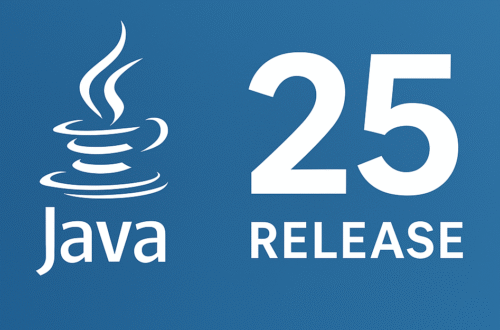📚Common Causes of OutOfMemoryError(OOM)in JVM
When the JVM runs out of memory and cannot allocate more objects or native resources, it throws an OutOfMemoryError. This error can occur in several scenarios. Therefore, understanding the root causes is important for diagnosing and fixing memory problems effectively.
1. Java Heap Space Exhaustion
- This occurs when the heap memory is full and no more objects can be allocated.
- As a result, the Garbage Collector cannot free enough space to handle new allocations.
- Common causes include:
- Memory leaks, where objects are unintentionally held in memory.
- Sudden spikes in object creation, which exceed the available heap.
- Insufficient maximum heap size (
-Xmxset too low).
2. GC Overhead Limit Exceeded
- This happens when the JVM spends too much time (>98%) on garbage collection but recovers very little memory (<2%).
- In other words, the heap is almost full, and GC cannot reclaim enough space to keep the application running efficiently.
3. Metaspace Exhaustion (Java 8 and later)
- Metaspace stores class metadata, such as class definitions and methods.
- Unlike the old PermGen, Metaspace grows dynamically. However, it can still run out of space if not managed properly.
- Causes include:
- Loading too many classes dynamically.
- ClassLoader leaks, where classes are never unloaded.
- In such cases, you may see the error:
java.lang.OutOfMemoryError: Metaspace.
4. Native Memory Exhaustion
- The JVM also relies on native (off-heap) memory for several purposes, including:
- Thread stacks
- Direct byte buffers (
DirectByteBuffer) - Code cache (JIT compiled code)
- JNI/native library allocations
- Causes: If these resources are overused, the JVM can fail. For example:-
- Creating too many threads can cause
unable to create new native thread. - Memory leaks in direct buffer allocations may also lead to OOM errors
- Creating too many threads can cause
5. Array Size Limit Exceeded
- The JVM has a platform-dependent maximum array size (close to
Integer.MAX_VALUE, ~2 billion). - Consequently, requesting an array larger than this limit results in:
java.lang.OutOfMemoryError: Requested array size exceeds VM limit.
6. Kernel or OS Memory Limits
- Even if the JVM is configured with enough memory, the operating system or container may impose stricter limits.
- For example:
- Running in Docker/Kubernetes with strict memory quotas can trigger OOM errors.
- OS-level restrictions on processes or threads may also prevent new allocations.
📝Summary of Key Causes
In summary, OutOfMemoryError in Java occurs when the JVM cannot allocate the required memory due to one of several reasons: heap space exhaustion, excessive GC activity, Metaspace leaks, native memory shortages, oversized arrays, or memory limits imposed by the OS or container. Therefore, by identifying the correct cause, developers can apply targeted fixes to resolve the issue
📚Java Heap Sizing Best Practices with -Xms and -Xmx
The JVM provides the flags -Xms (initial heap size) and -Xmx (maximum heap size) to control heap memory allocation. Proper sizing is critical because it directly impacts application performance, garbage collection behavior, and system stability.
# JVM Heap Sizing Flags
-Xms<size> # Initial heap size (e.g., -Xms2G)
-Xmx<size> # Maximum heap size (e.g., -Xmx8G)
1. Set Initial and Maximum Heap Size Appropriately
- Use
-Xmsto define the initial heap size and-Xmxto set the maximum heap size. - In many cases, it is recommended to set both values to the same size (for example,
-Xms4G -Xmx4G). - By doing so, you avoid heap resizing at runtime, which can otherwise introduce performance overhead.
2. Size Heap Based on Application Needs and Physical Memory
- The heap should be large enough to hold the application’s live data footprint, which reduces garbage collection frequency.
- However, it should not be so large that it results in excessive GC pause times.
- In addition, always ensure that the heap fits comfortably within the available physical memory to prevent OS-level swapping, which slows down performance significantly.
3. Avoid Setting Heap Too Small
- A heap that is too small leads to frequent full GCs and may trigger
OutOfMemoryErrorexceptions. - Therefore, always monitor GC logs and heap usage metrics to make informed adjustments.
4. Avoid Oversized Heap Without Proper GC Tuning
- A very large heap can reduce GC frequency; however, it also increases pause times during collection.
- Consequently, if you need very large heaps, you should use advanced collectors such as G1GC or ZGC.
- Moreover, tune GC flags according to your application’s workload to balance throughput and latency.
5. Rely on Profiling and Monitoring
- Rather than guessing heap sizes, use profiling and monitoring tools (e.g., JVisualVM, JFR, or GC logs).
- These tools provide insights into heap usage patterns, GC frequency, and pause durations.
- As a result, you can make data-driven decisions when setting
-Xmsand-Xmx.
6. Consider Platform Limitations
- The maximum heap size depends on the underlying platform.
- For example, 32-bit JVMs are limited in addressable memory compared to 64-bit JVMs.
- Therefore, always check system and container limits before assigning a very large heap.
📝 Summary
In summary, optimal Java heap sizing with -Xms and -Xmx depends on balancing application needs, garbage collection performance, and system resources. Start by setting both flags to the same size, monitor heap behavior closely, and adjust based on profiling data rather than arbitrary values
